 |
Mathematical Functions in JavaScript |
| << INTELLIGENT SYSTEMS: techniques for designing Artificial Intelligent Systems |
| DATA MANAGEMENT >> |

Introduction
to Computing CS101
VU
LESSON
35
MATHEMATICAL
METHODS
(WEB
DEVELOPMENT LESSON
12)
During
the last Lesson we discussed
Event handling:
We
looked at the concept of event-driven
programs and event handlers
What
are they?
What
do they do?
How
do we benefit from
them?
We
wrote simple programs to
demonstrate the capabilities of a few
event handlers
What
is Event Handling?
Capturing
events and responding to them
The
system sends events to the
program and the program responds to them
as they arrive
Events
can include things a user
does - like clicking the
mouse - or things that the
system itself does -
like
updating the clock. Today we
will exclusively focus on
user-events.
Event
Driven Programs:
Programs
that can capture and respond to
events are called
`event-driven programs'
JavaScript
was specifically designed for
writing such programs
JavaScript's
Handling of Events:
Events handlers
are placed in the BODY part of a Web
page as attributes in HTML
tags
Events
can be captured and responded to directly
with JavaScript one-liners embedded in
HTML tags in
the
BODY portion
Alternatively,
events can be captured in the HTML code,
and then directed to a JavaScript
function for
an
appropriate response
In-Line
JavaScript Event
Handling:
Event
handlers are placed in the BODY portion
of a Web page as attributes of HTML
tags
The
event handler attribute
consists of 3 parts:
The
identifier of the event
handler
The
equal sign
A
string consisting of JavaScript
statements enclosed in double or
single quotes
Multiple
JavaScript statements (separated by semicolons)
can be placed in that string,
but all have to fit
in a
single line; no newline
characters are allowed in
that string
Due
to this limitation, sophisticated event
handling is not possible with
in-line event
handling
Usage
Guideline:
For
very short scripts, "all
code in the tag" works
well
The
"code in the HEAD portion" is the
right choice for developing
larger JavaScript scripts
It
makes the code easier to
read
It
allows the reuse of a function
for multiple event
handlers
onFocus
& onBlur:
onFocus
executes the specified JavaScript code
when a window receives focus or
when a form element
receives
input focus
onBlur
executes the specified JavaScript code
when a window loses focus or a
form element loses focus
233
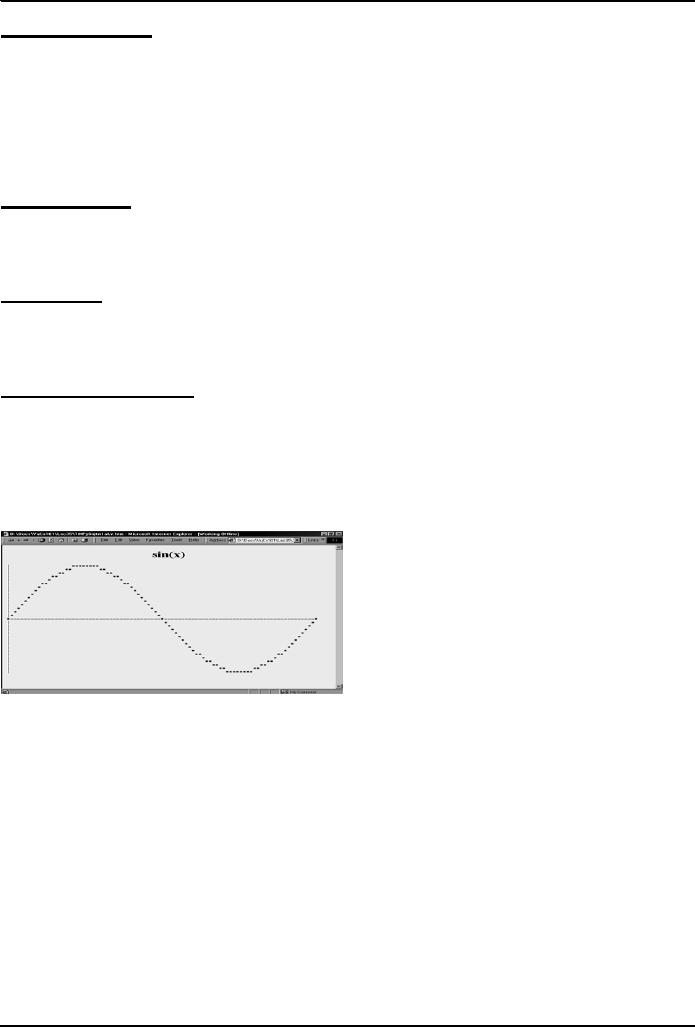
Introduction
to Computing CS101
VU
onLoad
& onUnload:
onLoad
executes the specified JavaScript code
when a new document is loaded
into a window
onUnload
executes the specified JavaScript code
when a user exits a
document.
Mixed-case
capitalization of event handlers (e.g.
onClick) is a convention (but
not a requirement)
for
JavaScript
event handlers defined in HTML
code
At times,
you may wish to use
event handlers in JavaScript code
enclosed in <SCRIPT>,
</SCRIPT>
tags
A
Note on Syntax:
In
those cases you have to
strictly follow the JavaScript rule
for all event handler
identifiers: they
must
all
be typed in small case, e.g.
`onclick' or `onmouseover'
Today's
Goal:(Mathematical Methods)
We
will look at JavaScript's
Math object
We
will look at solutions for
simple problems using various
methods of the Math
object
35.1
Problems & Solutions:
JavaScript
doesn't support drawing of
graphics
However,
crude graphics can be put together
with the help of various
text characters or
tables
One
cannot write a character at a random
location on the screen using
JavaScript
Instead,
the graph has to be drawn
from top to bottom, one
row at a time just
like when regular text
is
written
to a document
<HTML>
<HEAD>
<TITLE>Sine
Function Plot</TITLE>
<SCRIPT>
function
plotSine( ) {
...
}
...
</SCRIPT>
</HEAD>
<BODY
onLoad="plotSine( )">
</BODY>
</HTML>
function
plotSine( ) {
var
ht, wd, rowN ; // rowN is
the row number
234

Introduction
to Computing CS101
VU
ht = 15 ; //
height of the half
cycle
wd = 90 ; //
width of the plot
document.write(
"<H1
align = 'center'>sin(x)</H1>" )
;
for(
rowN = ht; rowN >= -ht;
rowN = rowN - 1 ) {
plotRow(
rowN, ht, wd ) ;
}
}
function
writeRow( row, wd ) {
var
rowE ;
document.write(
"<FONT
face = 'courier' size =
'-2'>" ) ;
for(
rowE = 0; rowE <= wd;
rowE = rowE + 1 ) {
document.write
( row[ rowE ] ) ;
}
document.write(
"<BR></FONT>" ) ;
}
function
plotRow( rowN, ht, wd )
{
var
theta, rowE ; // rowE is the row
element
var
row = new Array( wd )
;
for (
rowE=0; rowE <= wd; rowE
= rowE + 1 ) {
theta = 2 *
Math.PI * rowE / wd ;
if(
rowN == Math.round(ht * Math.sin( theta
)))
row[
rowE ] = "*" ;
else
row[
rowE ] = " " ;
}
writeRow
( row, wd ) ;
}
function
plotRow( rowN, ht, wd )
{
var
theta, rowE ;
var
row = new Array( wd )
;
for (
rowE=0; rowE <= wd; rowE
= rowE + 1 ) {
theta = 2 *
Math.PI * rowE / wd ;
if(
rowN == Math.round(ht * Math.sin( theta
)))
row[
rowE ] = "*" ;
else
if(
rowE == 0 )
row[
rowE ] = " " ;
row[
rowE ] = "|" ;
}
else
writeRow
( row, wd ) ;
if(
rowN == 0 )
}
row[
rowE ] = "-" ;
else
235
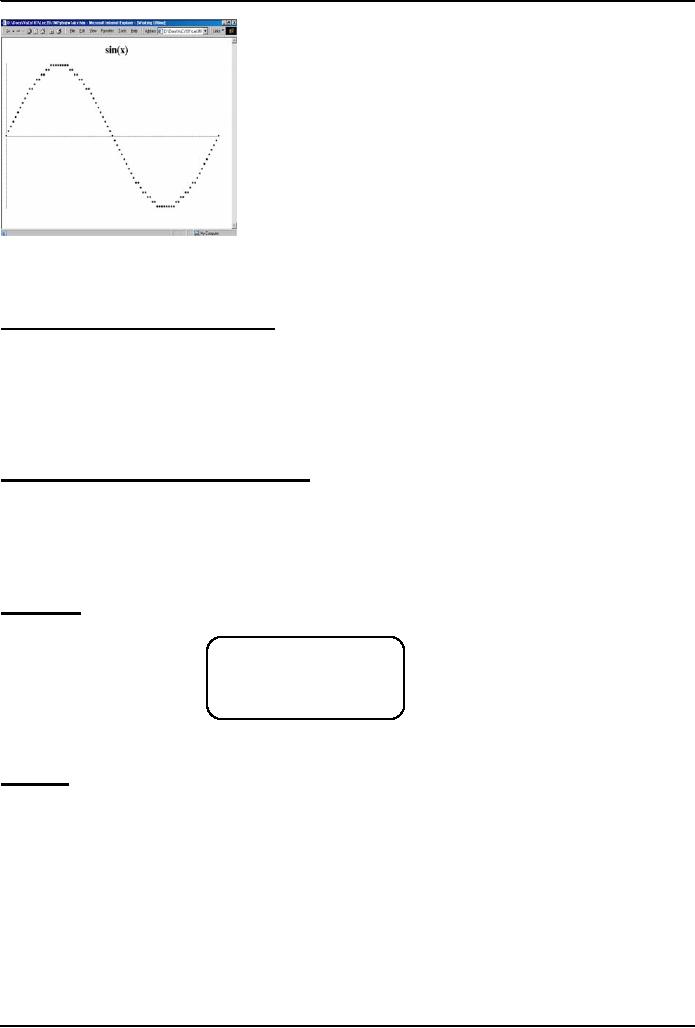
Introduction
to Computing CS101
VU
That
is a sine wave.
How
about a cosine?
Or a
tangent?
Or,
even, the natural
logarithm?
Today
We Have Seen 3 New Elements:
Math.PI
A
property that gave us the value of
Pi
Math.round(
)
A method
that rounded a number to its
nearest integer
Math.sin(
)
A method
that gave us the sine of an
angle
All 3
belong to JavaScript's Math
object
35.2
Mathematical Functions in
JavaScript:
In
addition to the simple arithmetic
operations (e.g. +, *, etc.) JavaScript supports several
advanced
mathematical
operations as well
Notationaly,
these functions are accessed
by referring to various methods of the
Math object
Moreover,
this object also contains several
useful mathematical constants as its
properties
This
object has no use, but of a
placeholder
Properties:
Math.PI
Math.E
Note the
CAPITAL
Math.LN2
lettering of
all
Math.LN10
properties
Math.LOG2E
Math.LOG10E
Math.SQRT2
Math.SQRT1_2
Methods:
236
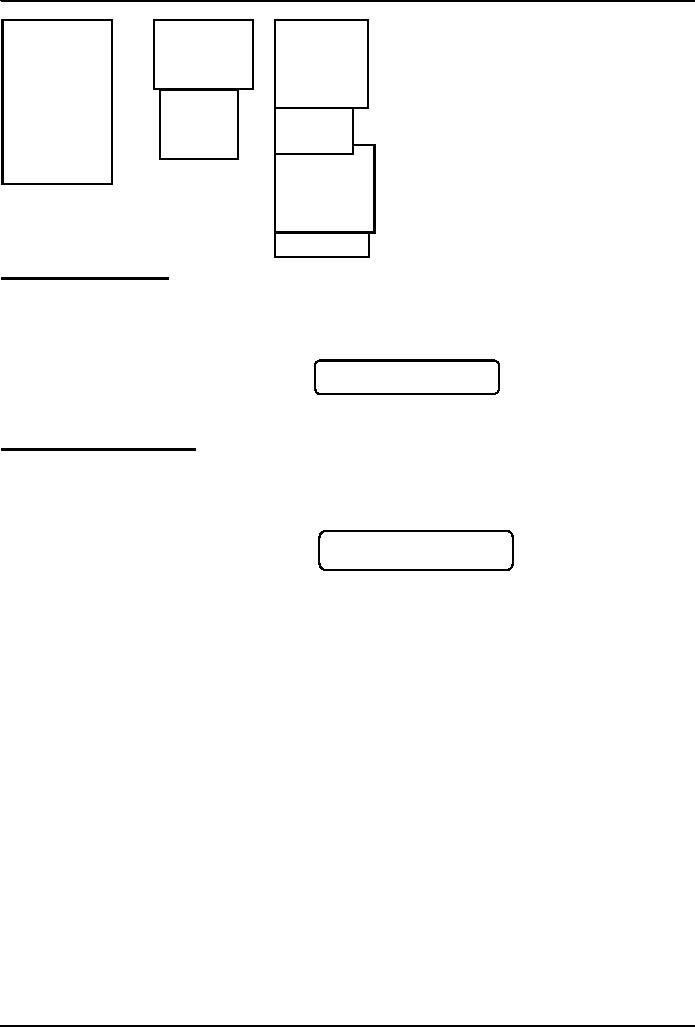
Introduction
to Computing CS101
VU
sin( r
)
sqrt( x
)
round( x
)
pow( x, y
)
cos( r
)
floor( x
)
ceil( x
)
tan( r
)
asin( x
)
exp( x
)
acos( x
)
abs( x
)
log( x
)
atan( x
)
atan2( x, y
)
max( x, y
)
max( x, y
)
random(
)
sin(
r ), cos( r ), tan( r ):
Standard
trigonometric functions
Returns
the sine, cosine or tangent of
`r',
where
`r' is specified in radians
EXAMPLE
0.707106781186547
document.write(
Math.cos( Math.PI / 4 ) )
asin( x ),
acos( x ), atan( x ):
Standard
inverse-trigonometric functions
Returns
the arcsine, arccosine or arctangent of
`r'
in
radians
EXAMPLE
1.5707963267948965
document.write(
Math.asin( 1 ) )
237
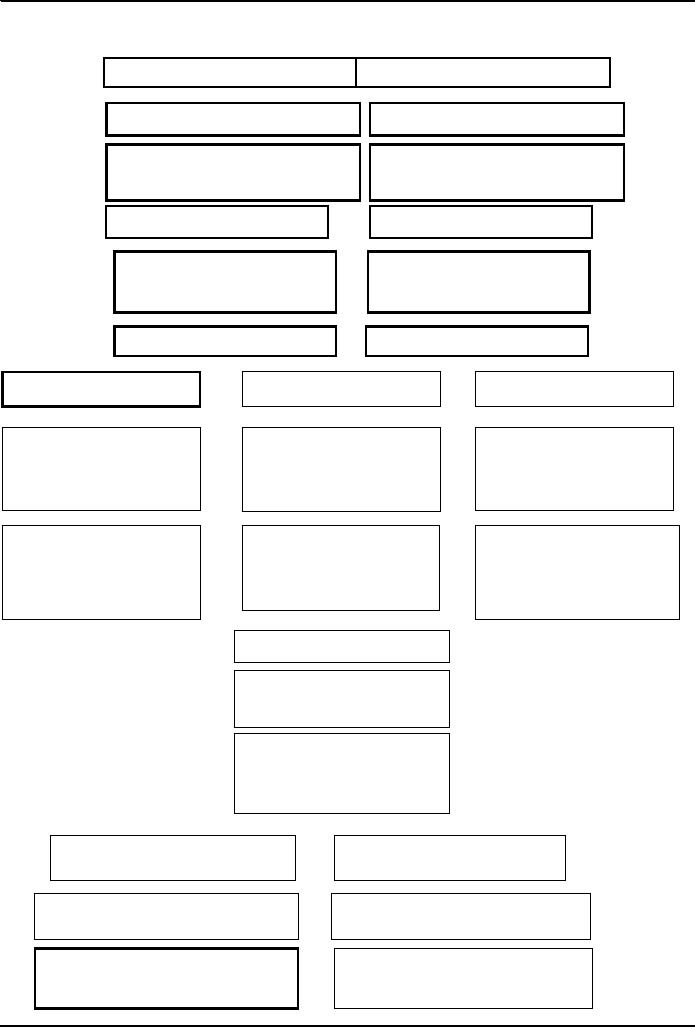
Introduction
to Computing CS101
VU
sqrt( x
)
pow( x, y
)
Returns
the square root of x
Returns x
raised to the power y
0.5 → 0.7071
2, 32 →
4294967296
exp( x
)
log( x
)
Returns
Math.E raised to
Returns
the the natural
the power
x
logarithm of
x
1 → 2.718281
Math.E → 1
floor( x
)
ceil( x
)
round( x
)
Returns
integer nearest
Returns
smallest integer
Returns
largest integer
to x
that is
greater than or
that is
less than or
equal to
x
equal to
x
1.1 → 1
1.1 → 1
1.1 → 2
12.5 → 13
12.5 → 12
12.5 → 13
-13.9 → -14
-13.9 → -14
-13.9 → -13
abs( x
)
Returns
the absolute
value of
x
1.1 → 1.1
-12.5 → 12.5
0→0
min( x, y
)
max( x, y
)
Returns
the smaller of x and
y
Returns
the larger of x and y
2, 4 → 4
2, 4 → 2
-12, -5 → -5
-12, -5 → -12
238
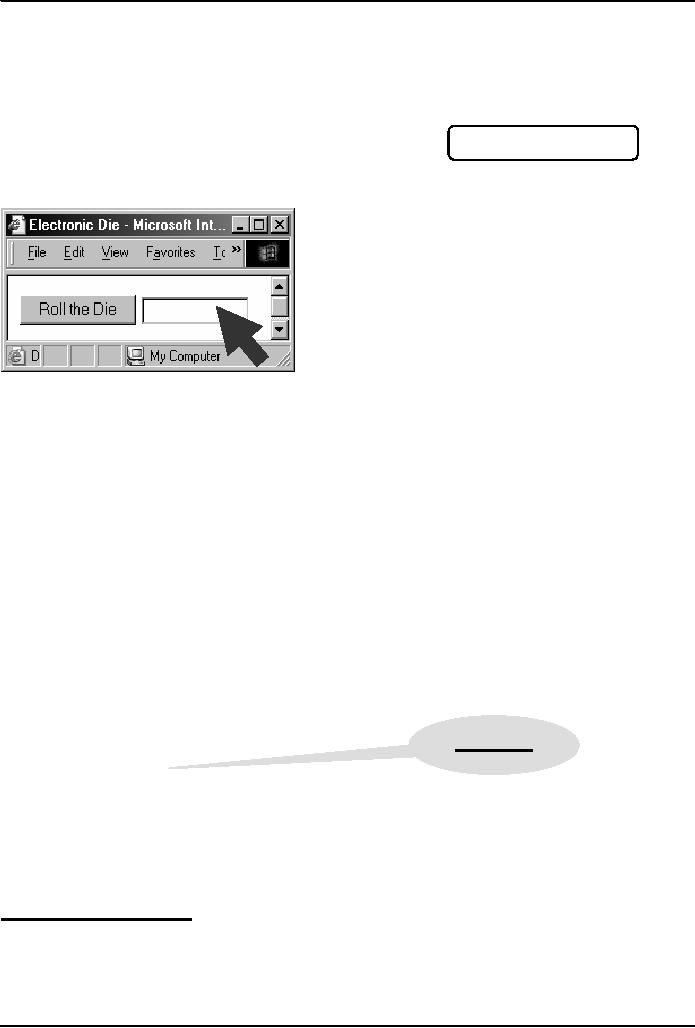
Introduction
to Computing CS101
VU
random(
):
Returns
a randomly-selected, floating-point number between 0
and 1
EXAMPLE
document.write(
Math.random( ) )
0.9601111965589273
random(
):
Example
Design
a Web page that displays the
result of the rolling of a
6-sided die on user
command
****
<HTML>
<HEAD>
<TITLE>Electronic
Die</TITLE>
<SCRIPT>
function
rollDie( ) { ... }
</SCRIPT>
</HEAD>
<BODY>
<FORM
... > ... </FORM>
</BODY>
</HTML>
<FORM
name="form1" method="post"
action="">
<INPUT
type="submit" name="Submit"
value="Roll
Die" onMouseOver="rollDie(
)">
<INPUT
type="text" name="die"
size="12">
</FORM>
Asterisk
function
rollDie( ) {
var
dieN, dieDots, dots ;
dieDots
= "* " ;
dieN
= Math.round( 6 * Math.random( ) )
;
for(
dots = 2; dots <= dieN;
dots = dots + 1 ) {
dieDots
= dieDots + "* " ;
}
document.form1.die.value
= dieDots ;
}
During
Today's Lesson ...:
We
looked at the properties and methods of
JavaScript's Math
object
We produced
solutions for simple problems
using several methods of the Math
object
239

Introduction
to Computing CS101
VU
Next
(the 13th) Web Dev
Lecture:
String
Manipulation
To
become familiar with a few
methods used for
manipulating strings
To
become able to solve simple
problems involving strings
240
Table of Contents:
- INTRODUCTION
- EVOLUTION OF COMPUTING
- World Wide Web, Web’s structure, genesis, its evolution
- Types of Computers, Components, Parts of Computers
- List of Parts of Computers
- Develop your Personal Web Page: HTML
- Microprocessor, Bus interface unit, Data & instruction cache memory, ALU
- Number systems, binary numbers, NOT, AND, OR and XOR logic operations
- structure of HTML tags, types of lists in web development
- COMPUTER SOFTWARE: Operating Systems, Device Drivers, Trialware
- Operating System: functions, components, types of operating systems
- Forms on Web pages, Components of Forms, building interactive Forms
- APPLICATION SOFTWARE: Scientific, engineering, graphics, Business, Productivity, Entertainment, Educational Software
- WORD PROCESSING: Common functions of word processors, desktop publishing
- Interactivity to Forms, JavaScript, server-side scripts
- ALGORITHMS
- ALGORITHMS: Pseudo code, Flowcharts
- JavaScript and client-side scripting, objects in JavaScript
- Low, High-Level, interpreted, compiled, structured & object-oriented programming languages
- Software Design and Development Methodologies
- DATA TYPES & OPERATORS
- SPREADSHEETS
- FLOW CONTROL & LOOPS
- DESIGN HEURISTICS. Rule of thumb learned through trial & error
- WEB DESIGN FOR USABILITY
- ARRAYS
- COMPUTER NETWORKS: types of networks, networking topologies and protocols
- THE INTERNET
- Variables: Local and Global Variables
- Internet Services: FTP, Telnet, Web, eMail, Instant messaging, VoIP
- DEVELOPING PRESENTATIONS: Effective Multimedia Presentations
- Event Handlers
- GRAPHICS & ANIMATION
- INTELLIGENT SYSTEMS: techniques for designing Artificial Intelligent Systems
- Mathematical Functions in JavaScript
- DATA MANAGEMENT
- DATABASE SOFTWARE: Data Security, Data Integrity, Integrity, Accessibility, DBMS
- String Manipulations:
- CYBER CRIME
- Social Implications of Computing
- IMAGES & ANIMATION
- THE COMPUTING PROFESSION
- THE FUTURE OF COMPUTING
- PROGRAMMING METHODOLOGY
- REVIEW & WRAP-UP of Introduction to Computing